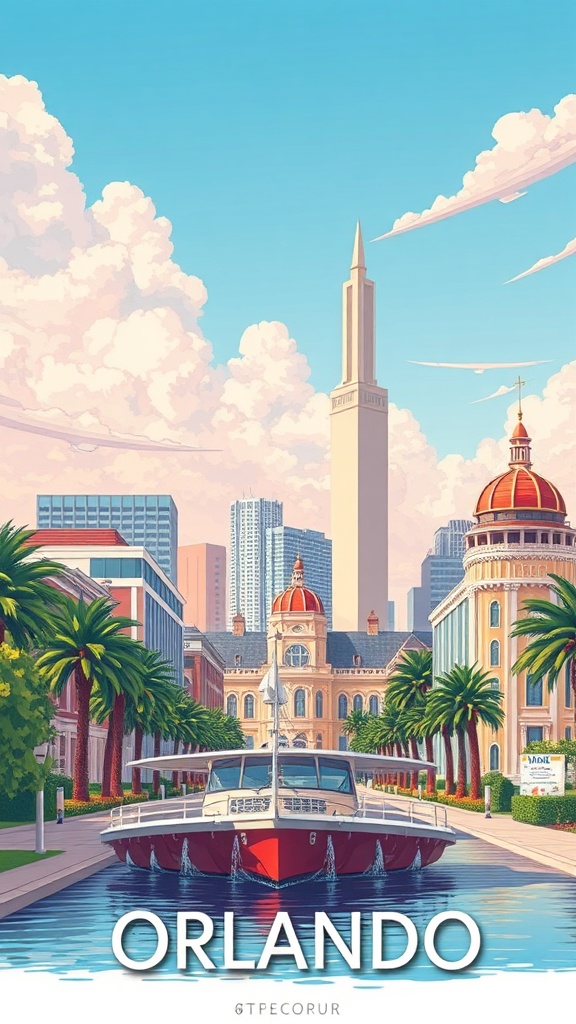Orlando: More Than Theme Parks — A Guide to the City’s Food, Arts, and Innovation Scenes
Orlando’s reputation as a theme-park capital is well earned, but the city’s appeal extends far beyond roller coasters. Visitors and residents are discovering a richer side of Orlando shaped by a thriving food scene, a growing creative economy, and revitalized neighborhoods that reward exploration.

Here’s what to know when you want to experience Orlando like a local.
A food scene with range and personality
Orlando’s culinary landscape is no longer defined by hotel buffets alone. Neighborhood hubs like Mills 50, Ivanhoe Village, and the Audubon Park Garden District host an energetic mix of independent restaurants, craft breweries, and specialty shops. Expect authentic Southeast Asian fare, elevated Southern cuisine, inventive tacos, and chef-driven tasting menus alongside popular brunch spots and late-night eateries.
For a curated food experience, visit markets like East End Market — a small local food hall and makers’ space — where you can sample artisanal bites and meet producers.
Food festivals and pop-up dinners happen frequently across town, offering a taste of the city’s creativity and diversity.
Arts, culture, and live performance
Orlando’s arts scene is booming.
The Dr.
Phillips Center anchors downtown performing arts, presenting Broadway touring shows, orchestras, and dance. Museums including the Orlando Museum of Art and smaller galleries in Creative Village and Thornton Park highlight local and regional artists.
Public art and mural projects are visible throughout neighborhoods, turning everyday streets into open-air galleries. For music lovers, the city hosts intimate venues and larger outdoor concert spaces, with many neighborhoods offering regular live-music nights that spotlight local talent.
Neighborhoods worth exploring
– Downtown and Lake Eola: A walkable core with parks, a Sunday farmer’s market, and waterfront dining.
– Winter Park: Tree-lined avenues, boutique shopping, and a scenic chain of lakes; it’s great for a relaxed day trip.
– Mills 50 & Corrine Drive: Eclectic shops, ramen bars, and vibrant street art.
– Ivanhoe Village & Thornton Park: Trendy dining and a lively evening scene with bars and waterfront patios.
– Lake Nona: A modern cluster known for healthcare, wellness amenities, and innovative design.
Innovation and the rise of a creative economy
Orlando is developing a reputation as a hub for healthcare, life sciences, simulation, and tech startups.
Clusters of research institutions, medical centers, and innovation districts attract talent and investment, creating job opportunities that diversify the economy beyond tourism. Coworking spaces, accelerators, and university partnerships make Orlando an appealing place for entrepreneurs and remote workers.
Getting around and practical tips
While a car is convenient for exploring suburban neighborhoods and nearby parks, downtown Orlando is increasingly walkable and served by local transit options. Bike-friendly lanes and dockless mobility services offer flexible short-trip options. For visitors, plan theme park days early in the morning or on weekdays to avoid peak crowds, and balance busy days with neighborhood outings to experience the city’s local character.
Outdoor life and green spaces
Mild, sunny weather supports an active outdoor culture. Kayaking on local lakes, jogging around Lake Eola, and visiting neighborhood parks are easy ways to enjoy the outdoors.
The region’s green spaces host markets, fitness classes, and community events that reflect the city’s social energy.
Orlando continues to evolve in ways that reward deeper exploration. Whether you’re drawn to innovative dining, lively arts, or a growing tech and healthcare ecosystem, the city offers a compelling blend of attractions that go beyond the expected.